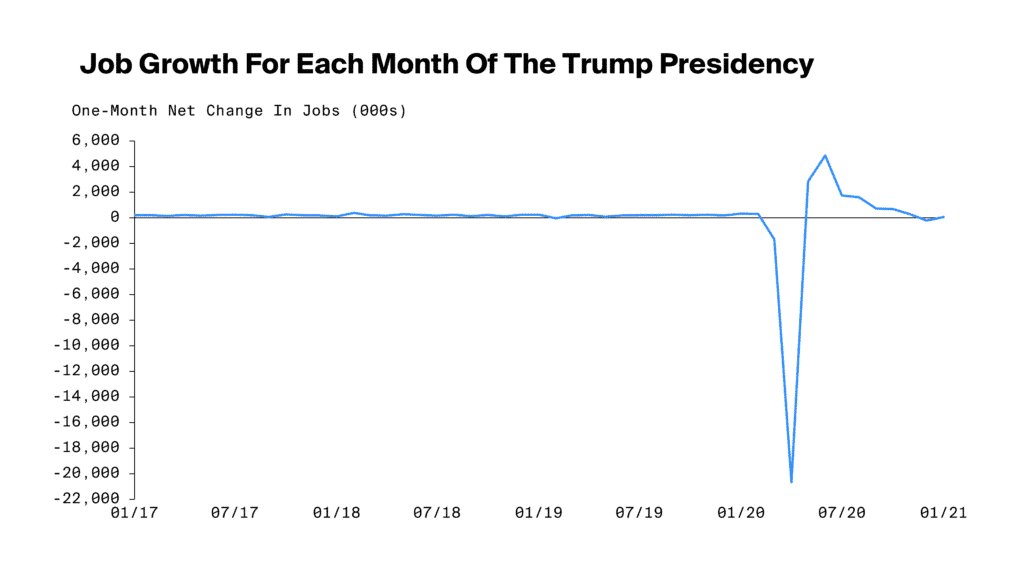Insights: The Final Jobs Report Of The Trump Administration
This week’s BLS data release marks the final jobs report of the Trump Administration, one defined by both record highs and lows for the U.S. labor force.
The economy gained 49K jobs in January 2021.
President Trump has long viewed job creation as an indicator of the success or failure of a presidency. During his 2016 campaign, he assured voters that he would be the “greatest jobs president” ever.
The onset of the COVID-19 pandemic in March uprooted what had previously been steady job growth, resulting in more than 20M jobs lost in the month of April alone. Although more than half of those early job losses have been recovered, a core group of low-income workers and people of color remain hard-hit, with many now falling into long-term unemployment. The Trump administration could have indeed ended its tenure with a “great” jobs market, with one very large caveat: no pandemic.

Comparing total job numbers across presidencies is difficult: given that the U.S. population has grown over time, a million jobs now represents a smaller share of the overall unemployment picture than in times past. Additionally, time spent in office differs, leaving some presidents with less time—whether for better or for worse. In modern history, Trump, Bush I, Carter, and Nixon served only one full term. The question then becomes, what did a president do with the time they had? With that said, let’s dive in.

Before the onset of the pandemic, the Trump-era economy was strong, albeit not record-breaking. Trump’s peak prime age labor force participation rate, or the participation rate of individuals aged 25-54, reached 83% in January of 2020, approaching the recent high of 83.3% set in 2008, and falling just under the all-time high of 84.5%, set in the late 1990s.

Despite not creating the “greatest” job market, the Trump Administration’s economic fallout was undoubtedly tied to COVID-19, which presented challenges unprecedented in modern times. As analogized by Paul Krugman, the impacts of the pandemic on the labor market have characterized themselves in a manner “much more like a natural disaster” than a conventional recession.
With the Trump era now concluded, here is where the economy stands: more than half of the 22M jobs lost at the onset of the pandemic are now recovered. Despite these gains, many have yet to return to work, with 4M classified as long-term unemployed, particularly in sectors like leisure and hospitality, mining, and manufacturing. The Biden Administration and Congress, who are currently debating the size and scale of an additional COVID-19 relief bill, have a difficult road ahead if their goal is for the labor market to look as robust as it did one year ago.
Note: Each President’s term for job creation is defined as the February after their inauguration until the January of the year they leave office.